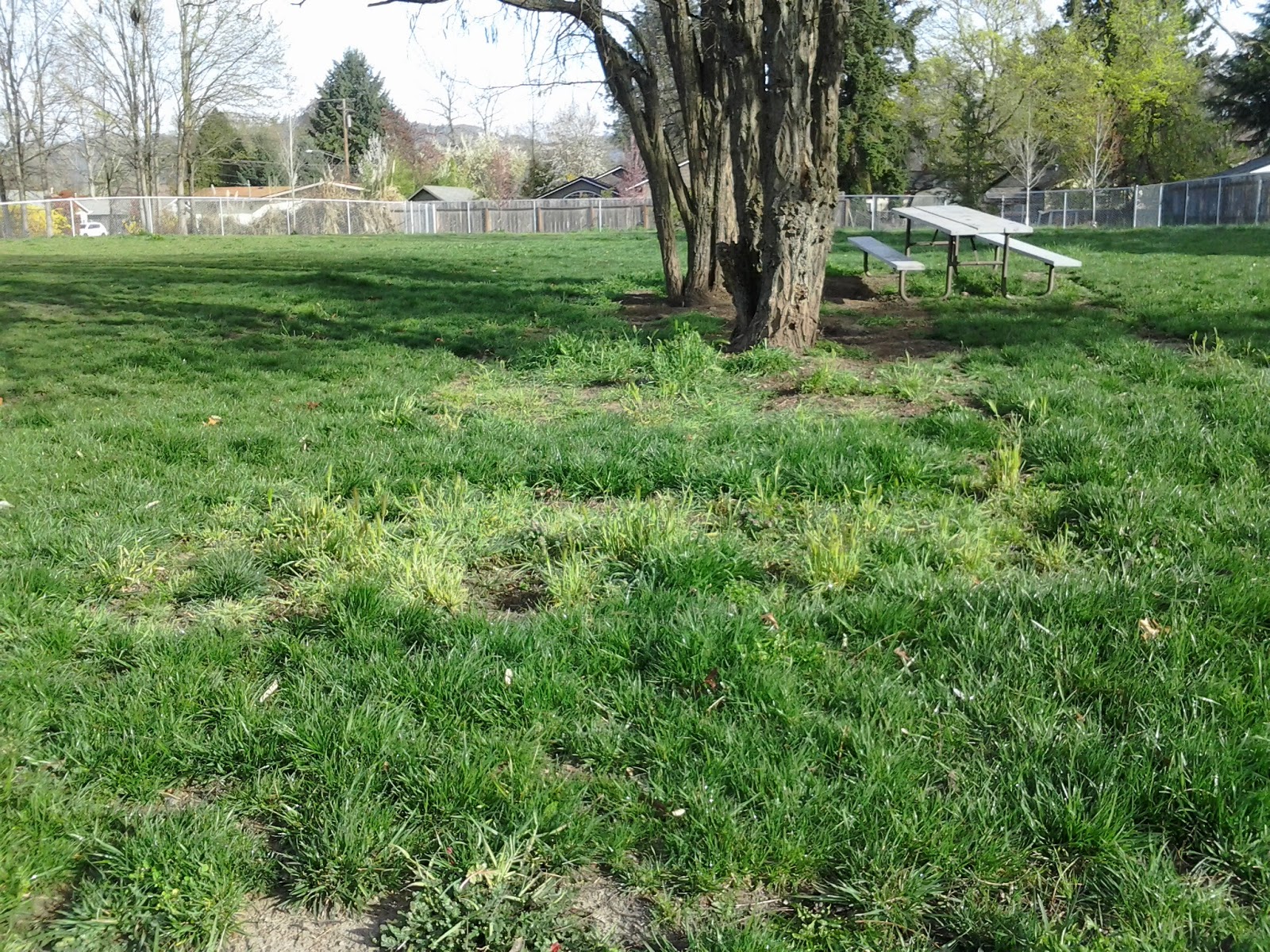Blooming foxtails in Greenwood Dog Park, suffering from a fungus that yellows its leaves
This morning I stopped with my dog at Greenwood Dog Park to throw some balls, and noticed that foxtails were already putting up seed stalks under the locust trees, shocking in early March. It’s more normal to see them starting to bloom in April. I pulled a plant with a seed stalk; it pulled easily. It’s officially weeding time at the dog park, though I expected to go after heron’s bill there before foxtails.
Heron’s bill is just starting to
bloom. It’s normally among the earliest
of annual weed flowers, but bitter cress is in full bloom and groundsel is already going to seed along the trail. It’s
going to be a heck of a weeding season, with the warm weather bringing out some
weed flowers early, while others that are daylight-dependent bloom on their
regular schedule.
Light colored foxtails show up well against dark green lawn grass
Blooming is the signal for weeding because that is the easiest time to kill any annual plant. It is also the express trigger for enforcement of our weed nuisance code, which forbids allowing weeds to “mature or go to seed.” Maturity is blooming; seeding is the next step.
Stop the plant when it blooms, and it
cannot spread seed to your neighbors, becoming a nuisance first simply by
spreading. Weeds are also ugly when gone
to seed; “seedy” is a synonym for neglected.
The seeds of heron’s bill, foxtails, and cheat grass stick in clothing
and fur and can downright dangerous to pets; heron’s bill drills itself in when
the dry seed gets wet, and all three are barbed. Last, but not at all least, tall, bushy annual
weeds dry out and can burn.
Annual plants are easiest to kill
when blooming because they put all their energy and much of the mass of their
roots into top growth to produce stalks, flowers and seed, while their roots
shrink and loosen in the soil. The stalks are tough and have a good hold on the
crown, where all the new growth comes from.
The roots pull easily from moist soil compared to earlier in the season,
when the roots are large and the top is soft.
Seeded foxtails in Bermuda grass, showing why it pays to pull it green.
But you don’t have to pull the roots
of blooming annual weeds, as there is no food in the roots. The crown, where the growth comes from, is
the key. Cut them under the crown with
scissors, and they are gone, even big tap-rooted annuals like thistles.
Preventing weeds is better than
weeding. It takes work, but it isn’t
stoop work, the hardest kind of work to do.
You can mulch bare soil with leaves, compost, wood chips, or coarse bark
to stop smaller seeds from sprouting and growing. An inch of compost just before crab grass
sprouts can stop crab grass and feed good grass in a lawn. It’s
time; it’s been warm and grass is growing.
For rough areas, leaves are cheapest,
most effective, and encourage perennial grasses, which are good for holding
ground and not becoming a huge fire hazard.
I used to dislike perennial grass, but it’s much better than annual
grasses like foxtails and cheat.



No comments:
Post a Comment
Please feel free to comment.